I’ve recently become obsessed with sheets as yarn. They’re extremely cheap to buy at op-shops, they tear easily into strips, and they take dye very well. What’s not to love? My first project was a small rug for our house-with only floorboards here it can be cold and uncomfortable for the small ones who want to play toys on the floor. And with very little in the way of possessions after so many interstate moves, it’s time to start making a home.
Supplies
-sheets. I used two flat sheets, one king and one queen for a 84cm diameter rug. If you’re dyeing them with Procion you’ll need as high a natural fibre content as you can find. The tags on mine were faded but they ‘felt’ like natural fibre-one must have had a small synthetic component as they dyed slightly different colours.
-dye. I use Procion dyes, and I sell kits here if you’d like to try one out.
-crochet hook. A 12mm one worked well with 1” strips.
-hand-sewing needle. For sewing down the ends of the strips, as they’re too chunky to weave in.
-sewing machine. For sewing the strips together to make your giant yarn ball. You could use the above hand-sewing needle if you don’t own a machine.
Making your Sheet Yarn
Take your sheets and cut the hems off all sides. Decide how wide you’d like the strips to be (I did 1”), mark each interval, then snip at each mark to begin your strips. Now grab the first one, and rip it off. Being a woven fabric, it should rip in a satisfyingly straight line-if it does seem a bit askew, discard that strip and rip the next-that one will be ‘straight’, or at least parallel to the first one.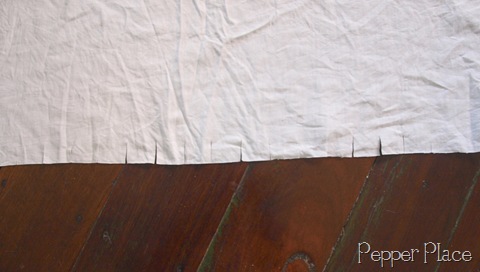
When you’re knee-deep in your strips, start sorting. Because I was working in the round, I knew i’d need more strips of the outer colour than the inner to make it look balanced-otherwise i’d have had a huge spot of yellow in the middle and the brown wouldn’t have made it around once. I sorted them by putting seven strips of each intended colour into a pile, then adding two strips to each pile except the inner colour, then two strips to each except the inner two colours, then two to each except the inner three colours………….i’m sure I don’t need to explain any further. At the end, I added the remnant strips to the outer colour piles (brown/green/blue). Make an effort to mix up your different sheets-even if they have the same fibre content they’ll most likely differ in coarseness, weave, or something else that could affect the final result.
I then sewed each bundle of strips end-to-end to make one long strip for each colour, winding into a ball as I went. You could be extra-OCD and match your thread colour to the colour you’re going to dye that bundle if you’re using a non-natural fibre thread, but I was lax and did them all white polyester. You can’t tell on the finished product.
As I finished each roll I labelled them very carefully. You can see the progression in the sizes of the balls between yellow (inner colour) and brown (outer colour).
Then it was time to wind into skeins, ready to dye. The youngest child found winding skeins sufficiently interesting to leave his playdough and help me, and I tied each skein loosely with scrap yarn in three places.

Dyeing
I vat-dyed them using Procion-as i’ve written comprehensive instructions to provide with my dye packs I won’t repeat them here. If you’d like a copy i’m happy to email them to you (no purchase required)-just ask me.
Once they were all done, I sewed the colours in order and we rolled it into a really, really big ball of yarn-note comparison with the husband’s hands. It was about the size of a basketball and very dense and heavy-we had a bit of fun throwing it around.
Crocheting
After some experimenting with the first rounds I settled on crocheting a simple pentagon, as it seemed to be the most amenable shape for the bulk of the yarn. You must start with the Magic Loop method, not a chained circle, to reduce the bulk. Anyone who has made a granny square can make a pentagon, as they’re essentially the same, but with five repeats around the round instead of four. The chart below shows one-fifth of the pentagon.
This is for all five repeats in the round, except the beginning of the first one-crocheters will know that you have to join your yarn to finish the previous round, then chain to make up the height of the stitches, which then counts as your first stitch. Clear as mud? Maybe this diagram will help.
The wording for the transition between rounds is this “ch2, sl st into top of turning chain, ch3 (counts as first dc), dc into same stitch, dc into next stitch” etc. All it means is that when you get to the end of a round slip stitch to finish it off, ch 3 to count as the first dc, then carry on your merry way.
It will grow very quickly, being such bulky yarn. When I reached the end of a brown round and knew I didn’t have enough yarn for another full round, I cut it off and threaded it through the last stitch. Then I sewed the end of the yarn down securely, hiding it in a stitch below, and trimmed it neatly. I did the same with the yarn strand from the beginning, and it was done.
Other ideas-when you sew it all together you can’t predict when the colours will change-odds are it’ll be in the middle of the round, like mine. If you’d like your colours to change with your rounds, don’t sew them all together. Use the balls as separate colours and change as needed. It’ll look neater, but I sort of like the random look.
You don’t need to dye sheets. Pick plain or patterned sheets and mix them all up together for a crazy look, or stick to one colour theme for a more sedate look (I don’t think i’ve ever wanted a sedate look, so you’re on your own with that one).
Use your sheet yarn for other projects-i’m making bunting next. Then a chevron rug…………and i’ll probably post tutorials for those too.
Made your own? Please share! Link to your pictures in the comments, or upload them to the Pepper Place show-off album.

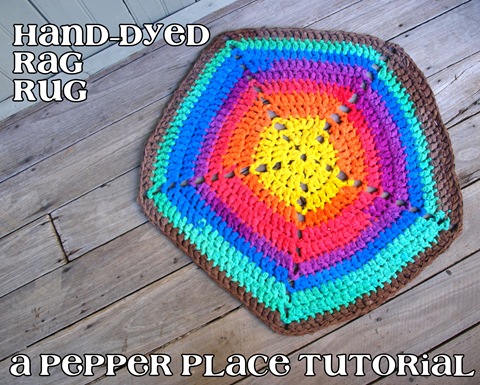
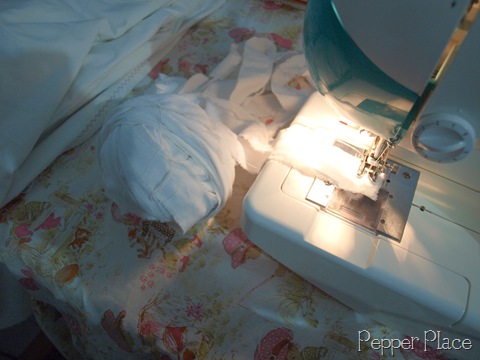
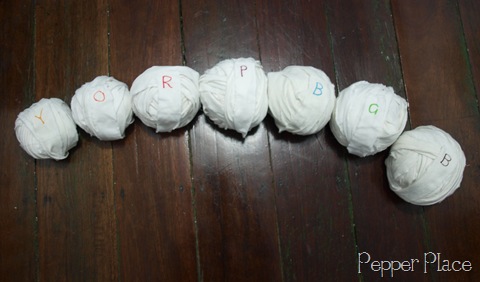
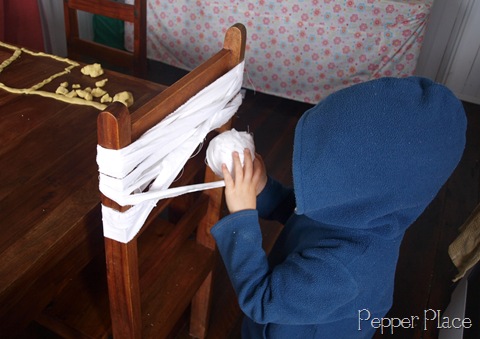
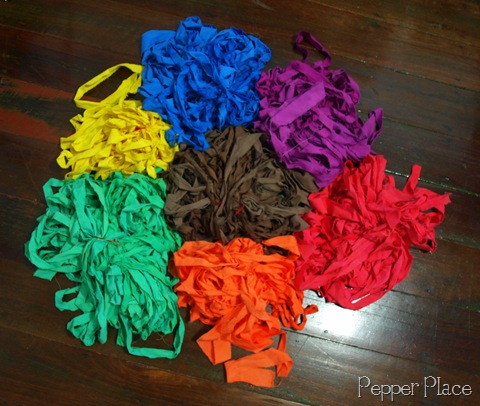
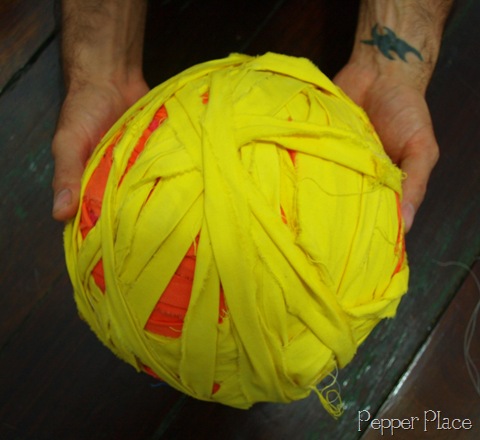
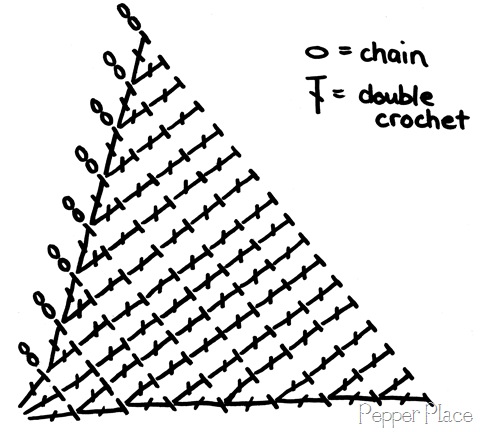
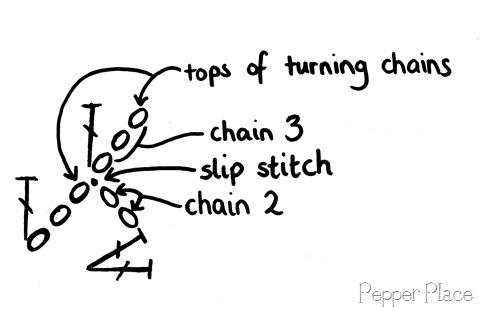
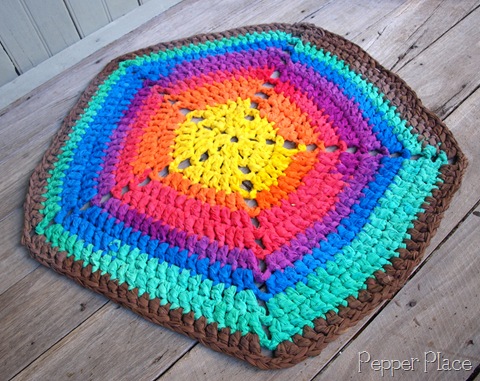
No comments:
Post a Comment